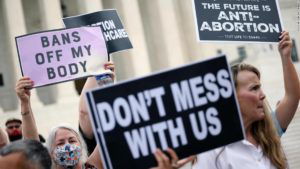Matthew Curtis of Sommers Schwartz Talks to NBC News About Deadly Carbon Monoxide in HUD Housing
May 20, 2019
Southfield, MI (Law Firm Newswire) May 20, 2019 – Personal injury attorney Matthew Curtis of Sommers Schwartz appeared in an NBC News feature about the threat of carbon monoxide poisoning in public housing overseen by the Department of Housing and Urban Development (HUD).
Curtis, along with attorney Michael Cunningham, is representing the family of a couple who died from carbon monoxide poisoning in their Wayne, Michigan, home. Anthony and Gwendolyn Fleming were residents of Hickory Hollow Cooperative, a federally subsidized apartment complex.
Their daughter called the police after her parents failed to open the door when she visited them on February 1. Emergency responders pronounced Gwendolyn, 65, dead at the scene. Anthony, 64, was airlifted to an Ohio hospital in an unresponsive state but could not be saved. Fire officials also evacuated families in 26 units throughout the complex after identifying high carbon monoxide levels.
The couple’s family is pursuing a wrongful death personal injury lawsuit against Hickory Hollow Cooperative and Huntington Management, which runs the property. Curtis spoke to NBC News about the case as part of their digital doc “Silent Killer: The Rising Toll of Carbon Monoxide in Public Housing” released on May 3.
In the video, Curtis can be seen examining various pieces of evidence such as incident reports and photographs of the Fleming home, including their blackened, soot-covered boiler. He alleged that “poor maintenance, poor ventilation, and a poorly functioning old boiler unit” resulted in deadly carbon monoxide levels in the apartment. Emergency responders were also alerted to accumulation of ice around the complex’s chimneys, a “possible contributing factor to the carbon monoxide levels.”
Authorities are still investigating the origins of the deadly gas buildup. However, HUD’s failure to enforce the mandatory installation of carbon monoxide detectors in federally subsidized housing is a significant factor in allowing landlords to slack off in their responsibility to provide this inexpensive, life-saving device. “You would think in order to have a decent, safe place to live in, free from hazards, that you would have a carbon monoxide detector,” Curtis said in the NBC News feature while commenting on various violations of resident rights in the case.
Carbon monoxide detectors are the only reliable way to identify the presence of the colorless, odorless gas inside a home. Carbon monoxide exposure in enclosed spaces can cause serious injuries and even be fatal. Huntington claimed to have installed the devices in the Fleming’s apartment. However, fire department officials said no alarms were sounding when they arrived.
Despite the known risks of the gas, HUD currently does not require carbon monoxide detectors to be installed in the 4.6 million affordable housing units it oversees. According to NBC News, at least 13 HUD housing residents have died from carbon monoxide poisoning since 2003.
The agency acted only after the NBC News investigation revealed the dangers faced by millions of low-income families who rely on subsidized housing. HUD announced in April that it is starting the lengthy process of creating a federal rule that requires carbon monoxide detectors in public housing.
Following the NBC News report, Sen. Kamala Harris, D-Calif., and two House Democrats are pushing Congress to pass legislation for the mandatory installation and maintenance of the life-saving devices in federally subsidized housing across the country. They wrote a letter to congressional leaders on May 6 urging them to expedite passage of the proposal, which includes $10 million in funding.
To learn more about the dangers of carbon monoxide and to view the NBC News digital doc, visit here.
Contact:
Sommers Schwartz Law Offices
1 Towne Square, #1700
Southfield, MI 48076
Toll-free: (866) 430-5556
Phone: (248) 595-7825



